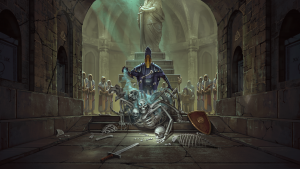While we’ve heard much talk of the supposed superpowers Elon Musk’s Neuralink project might enable, it hits differently to see it working for yourself in a game. Musk’s current chip-on-brain testing project (“PRIME”) has had two participants so far, and it looks like the second one’s wasted no time getting to gaming on PC.
Neuralink’s “Link” is a brain-computer interface (BCI)—a device that gets surgically implanted into the brain and is intended to allow one to control digital devices by neural activity, ie, thought. According to the latest Neuralink PRIME study progress update, Alex, the second participant, has not only been making fast use of the Link for 3D print designs in CAD software Fusion 360, but he’s also been using it to play Counter-Strike 2.
Alex is using the Link to literally think where to go in the game, and it takes him there.
This is more than an extravagant luxury, too, because Alex has a spinal cord injury that makes interfacing with digital devices difficult. The Neuralink update tells us that, for gaming, Alex previously used a mouth-operated device called the Quadstick, but this only has one joystick.
Now, with the Link, he can “move and aim simultaneously, unlocking a more intuitive gameplay experience”. Surely it also unlocks a whole world of FPS games, making them eminently playable.
It seems this is what it’s all about for Musk, too. As stated back in May, the goal is “to provide a high-performance interface that will enhance the control of digital devices for people with quadriplegia, unlocking their personal and professional potential”.
And the goal of the PRIME study specifically is to “assess the initial functionality of our BCI for enabling people with quadriplegia to control external devices with their thoughts.”
It worked well with the first participant (some BCI-detaching issues aside), and it looks like it’s working well with the second one, too.
A 3D-printed charger mount that Neuralink’s second patient, Alex, designed using his Link. (Image credit: Neuralink)
Alex seems happy with it, stating he’s “super impressed with how this works”, and regarding gaming specifically, he says, “Just running around is so enjoyable because I can look side to side, and not need to move Quadstick left and right… I can [think about where to] look and it goes where I want it to.”
Now look, I’m the last person anyone needs to warn about the dangers of transhumanism and melding our brains with computers. Trust me, my alarm bells ring louder than ever.
But even I can’t help but feel that BCIs, at least for now, under this specific project, might actually be used for good—more than good, really, given that this is a seriously noble cause and is showing excellent, game-changing results.










